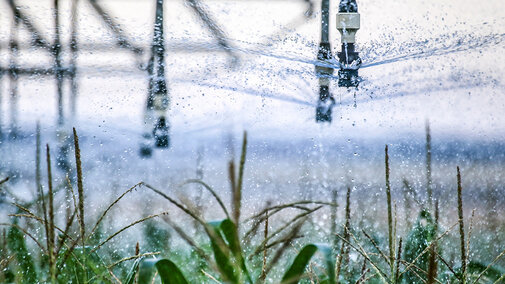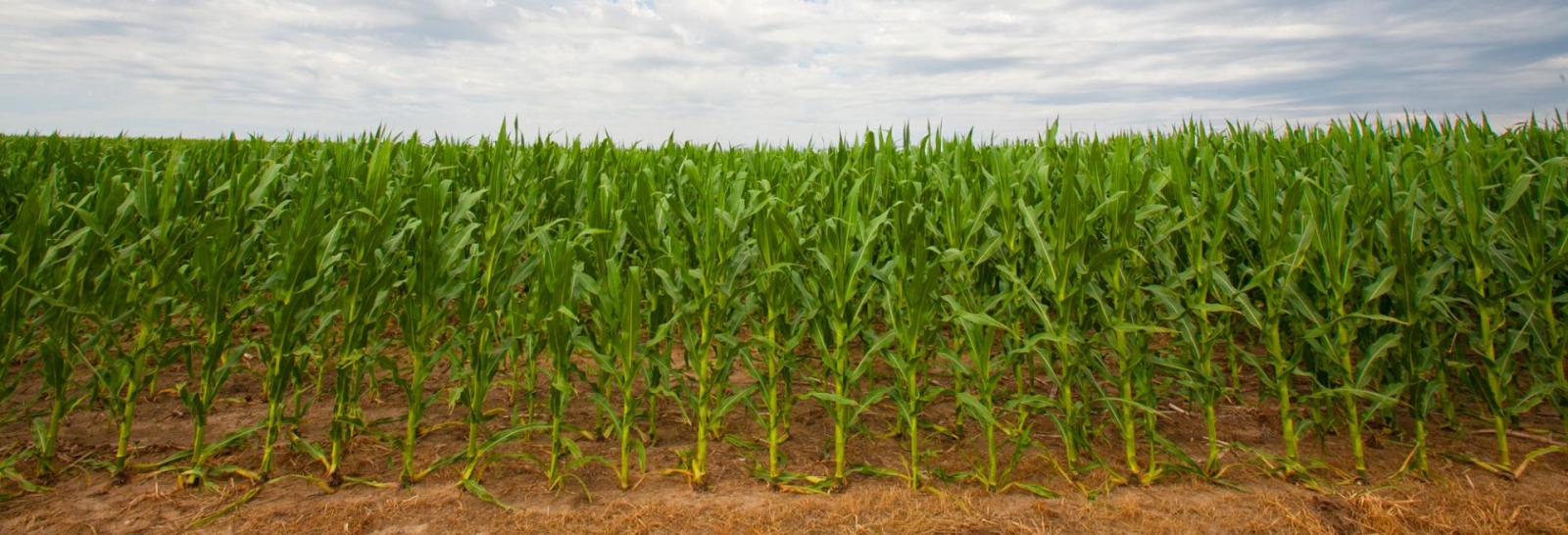The Weekly Irrigation Newsletter on CropWatch features results from a collaborative Nebraska Extension research study involving three Nebraska growers, who are utilizing soil moisture sensors to schedule irrigation throughout the growing season. Results are updated every Monday.
Introduction
In 2024, Nebraska Extension launched the Weekly Irrigation Newsletter to share timely insights on irrigation decisions, featuring three growers located in east-central Nebraska. Due to the positive feedback, we are continuing the program in 2025.
This year, three new growers are participating. In each of their corn fields, we installed a set of three Watermark (Irrometer) sensors at 1-, 2-, and 3-foot soil depths to track soil moisture throughout the growing season. A rain gauge was also installed to monitor both rainfall and irrigation events. These instruments are connected to an IC-10 datalogger (Irrometer), which records data at one-hour intervals. With a telemetry system in place, the data is transmitted remotely, allowing for timely irrigation decisions.
Before the irrigation season began, we met with each grower to develop an irrigation plan and reviewed how to interpret the soil sensor data. We used guidance from Nebraska Extension Circular EC3036, “Irrigation Scheduling Strategies When Using Soil Water Data”, to help them understand how soil tension data can support irrigation scheduling.
The goals of this program are to:
- Increase awareness of available irrigation scheduling technologies,
- Improve grower knowledge of how to interpret and apply soil moisture sensor data, and
- Encourage future adoption of this technology for improved water management.
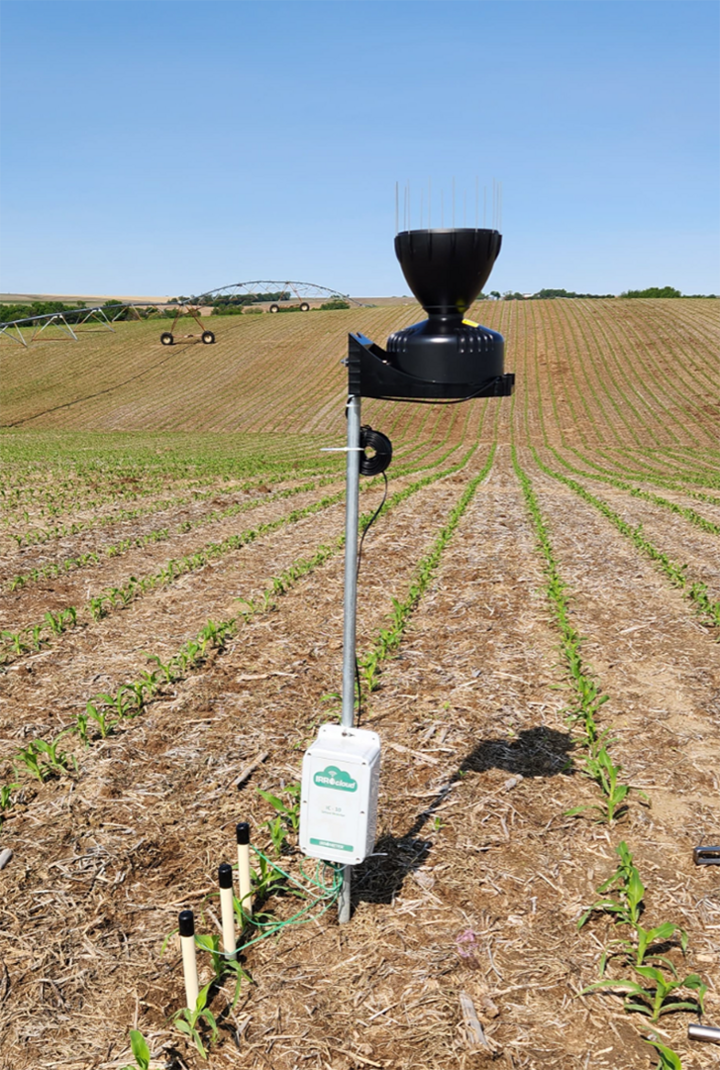
How to Use Soil Tension Data from Watermark Readings
In simple terms, watermark sensors provide a reading of soil tension. The smaller the tension, the more water available in the soil, and the larger the tension, the less water available in the soil.
Below are two charts (Figure 2a and 2b) showing the relationship between watermark reading, plant available water, and soil water storage above and below field capacity (EC3036). The soil types are the same as those found in the growers’ fields where sensors were installed. A grower irrigating in a silt loam soil will have to wait for the watermark to reach the desired water zone, and irrigation should be applied to recharge the soil at the bottom of the rain storage zone (55 cb). If managing irrigation in a loamy fine sand that has low water holding capacity, irrigation should be applied to return the soil to field capacity.
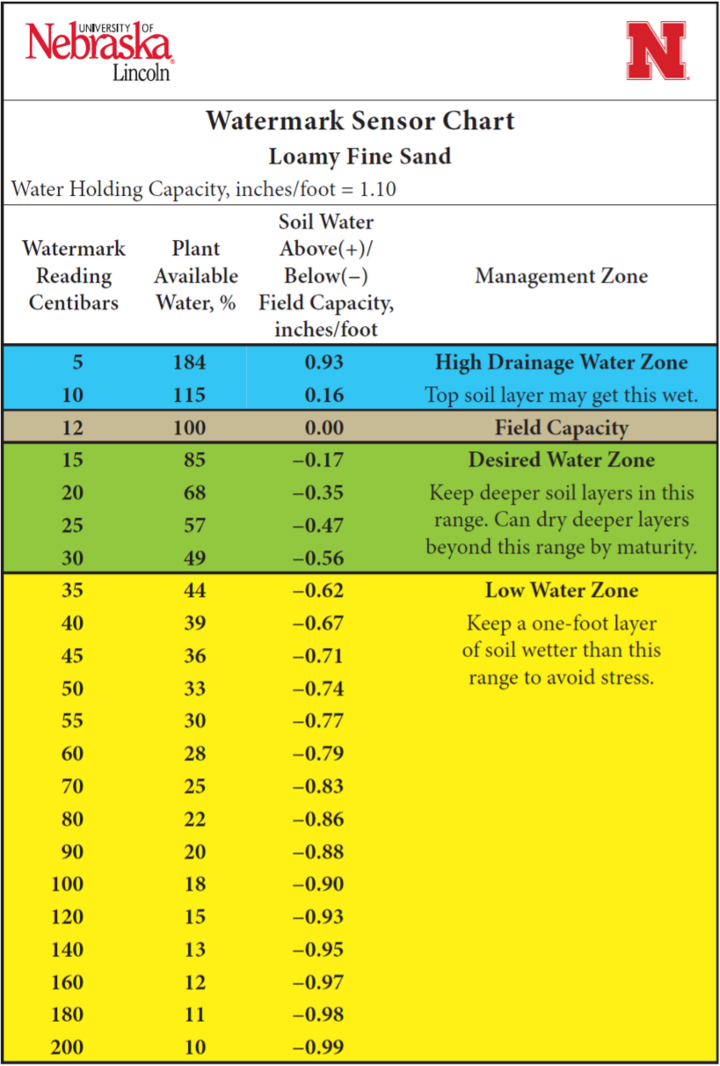
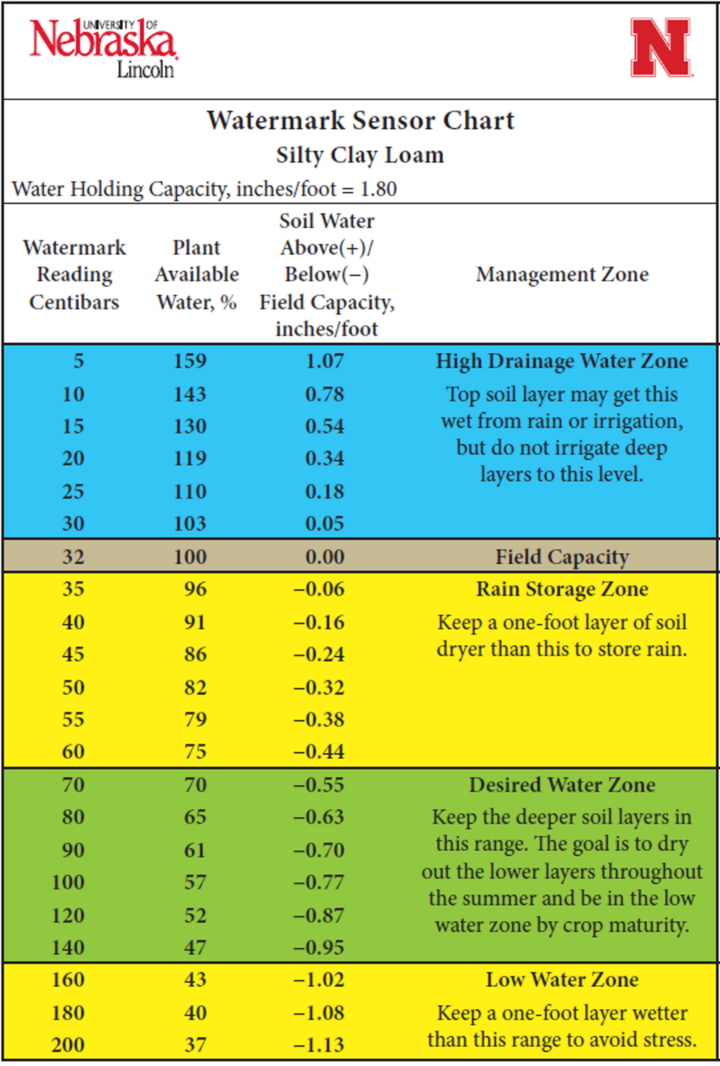
Early-season Crop Evapotranspiration and Irrigation
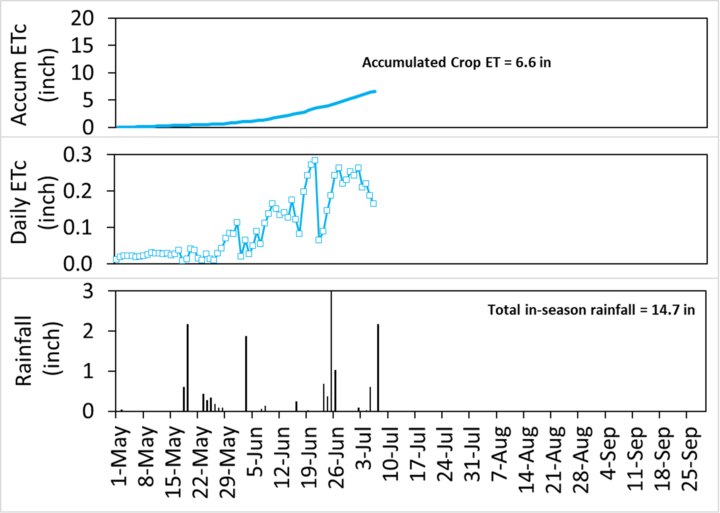
- Crop evapotranspiration (crop water use) has been increasing daily since early June 2025, with accumulated crop evapotranspiration of 6.6 inches since emergence.
- Past seven days crop evapotranspiration was 1.54 inches.
- Rainfall has been abundant since corn emergence. Accumulated rainfall is about 15 inches to date.
Grower’s Irrigation Decision (Installation to July 8)
Understanding the chart:
- solid line — sensor at 1 foot soil depth
- dashed line — sensor at 2 feet soil depth
- dotted line — sensor at 3 feet soil depth
- blue arrows — rainfall in inches
- green arrows — irrigation in inches
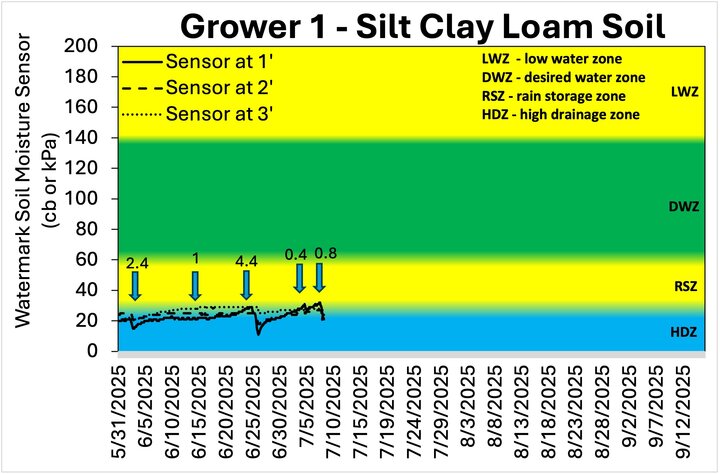
- Irrigation was not required due to the sufficient and timely rainfall.
- All three sensors reporting reading near field capacity.
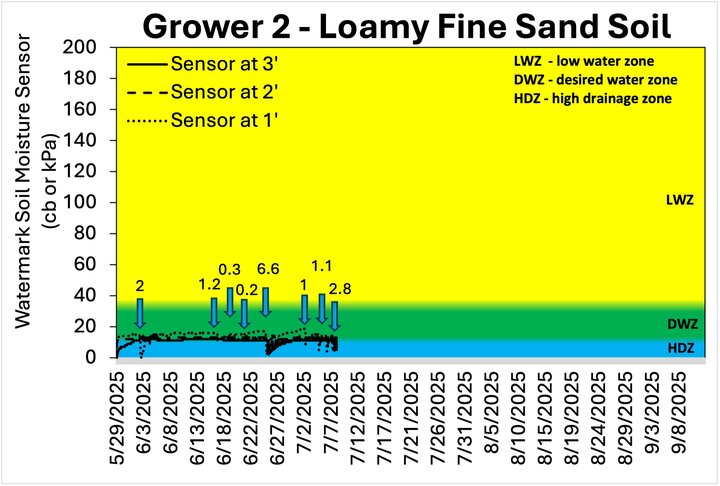
- Irrigation was not required due to the sufficient and timely rainfall.
- All three sensors reporting reading near field capacity.
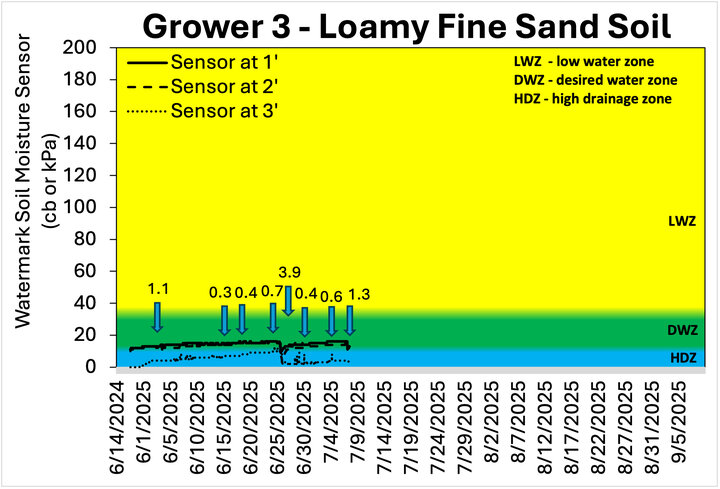
- Irrigation was not required due to the sufficient and timely rainfall.
- Top two sensors reporting reading near field capacity and bottom sensor at saturation.
